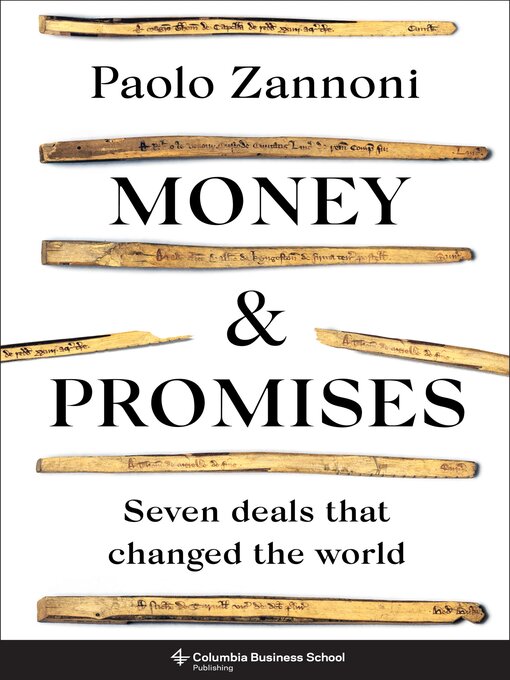Where did modern banking come from—and how does this history help us understand financial crises?
In the twelfth century, Pisa was a thriving metropolis, a powerhouse of global trade, and a city that stood at the center of medieval Europe. But Pisa had a problem: Money came in the form of coins, and they were becoming scarce. In the face of this financial and monetary crisis, the foundations of modern banking were laid.
In Money and Promises, the distinguished banker, executive, and historian Paolo Zannoni examines the complex relationship between states and banks that has changed the world. Drawing on in-depth archival research, he explores seven case studies: the republic of Pisa, seventeenth-century Venice, the early years of the Bank of England, imperial Spain, the Kingdom of Naples, the nascent United States during the American Revolution, and Bolshevik Russia in 1917 through 1923. Zannoni also tells the story of how the Continental Congress established the first public bank in North America, exploring the roles of Thomas Jefferson, Benjamin Franklin, and Alexander Hamilton. Spanning many countries, political systems, and historical eras, this book shows that at the heart of these institutions is an intricate exchange of debts and promises that shaped the modern world as we know it.
- Available now
- Sleuth Out a New Mystery Series
- Most popular
- Found at Airport Bookstores
- Not Such a Happy Home: Domestic thrillers & haunted homes
- Try something different
- Perpetually Popular Nonfiction
- Quirky and Heartfelt Reads
- Read Banned Books!
- See all ebooks collections
- Audiobooks for the Drive to Las Vegas
- Audiobooks for the Drive to Palm Springs
- Audiobooks for the Drive to San Francisco
- Available now
- Audiobooks for the Whole Family
- Most Popular Audio Between 1 and 3 Hours
- New audiobook additions
- Listen While You Run: Audiobooks for Workouts
- Try something different
- Most popular
- See all audiobooks collections

